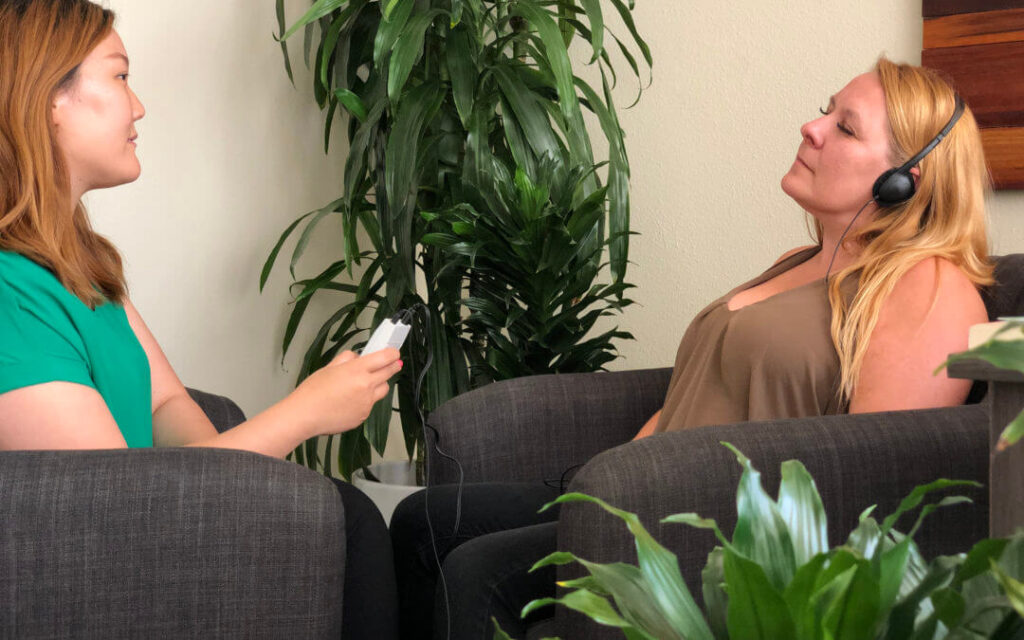EMDR, or Eye Movement Desensitization and Reprocessing, is a specialized form of integrated therapy. Over the past three decades, it has proven to be highly effective in treating PTSD and trauma disorders as well as many other types of mental health issues.
In some cases, it is used as an adjunct therapy when treating eating disorders, panic attacks, addiction, phobias, sexual dysfunction, anxiety-related issues, and psychological trauma resulting from cancer treatment.
What EMDR is like
The treatment itself is quite involved and will generally take several appointments to complete, months if done correctly. Considered an alternative therapy, it relies on your own eye movements to lessen the emotional impact of traumatic or stressful events.
As you will see from the outline of the phases of EMDR below, the first three phases are done to help you prepare for the actual therapy. A trained, or certified EMDR therapist educated in the best practices of the therapy will spend the majority of the time working with you in these three phases: Planning, Preparation and Assessment.
It is important to keep in mind that EMDR requires that you are properly “resourced”, meaning that you have the supports in place, prior to actually starting the therapy. Resourcing includes finding a support group that you feel a part of, family or loved ones who are supportive of your treatment, a hobby or passion that you enjoy, and anything else that helps you in a positive way. Only once these are in place, will your therapist begin the reprocessing.
During a session, which usually lasts about an hour and a half, your therapist will have you recall the stressful event. You will be asked to include in those memories all the physical and emotional sensations you can remember while they move their finger back and forth before your eyes. Alternative ways to create bilateral stimulation are with handheld buzzers or headphones with alternating sounds.
As the session goes on, they will gradually guide your thoughts to more pleasant memories. At the beginning and at the end of the session, you will be asked to rate your level of distress.
The proof
As it is a relatively recent approach (the initial study was first published in the Journal of Traumatic Stress in 1989), it is still gaining momentum. However, there have been many positive results in treating veterans with PTSD.
Some research shows that EMDR is helpful for 77 percent of patients accessing the treatment for PTSD. It has a lower dropout rate than other exposure therapies, and is largely more effective in addressing symptoms.
In terms of supporting research for EMDR, a few things can be concluded:
- It works better than doing nothing.
- In many cases, it is more effective than supportive listening.
- It does not outperform CBT on its own.
- Other exposure-based treatments have seen similar results.
It is important that EMDR be integrated into a treatment program that addresses all aspects of your unique situation, as it will be much more effective than EMDR therapy on its own.

The EMDR treatment plan
EMDR therapy consists of eight separate phases, usually spread out over 12 therapy sessions, though, as we mentioned above, the first few phases may take longer depending on your unique circumstances.
Phase one: Planning
In the first phase, your therapist will go over your history. You will be asked to talk about the trauma and any traumatic memories that trigger your responses.
Phase two: Preparation
You will then learn stress management techniques, such as mindfulness and deep breathing. These methods will help you cope with traumatic memories when they come up.
Phase three: Assessment
In the third phase, you will be asked to identify specific memories and physical components of those memories that will later be used in the EMDR treatment.
Phase four – seven: Therapy
In phases four through seven, your therapist will begin using EMDR to target the memories you have identified. You will be asked to perform rapid eye movements, either following their finger or triggered by finger taps, music, or other gestures.
The therapist will ask you to recall the trauma and the feelings you have around these events. If you feel overwhelmed or if the memories cause you too much distress, your therapist will bring you back to the present before starting again.
Phase eight: Evaluation
Following each session and at the end of the cycle, you will be asked to assess your progress. Your therapist will also provide their own assessment.
If you struggle with PTSD or trauma, we can help. Reach out today to find out how to get started. Call Roots Through Recovery via (866) 766-8776 to schedule a FREE consultation with our team or visit us at 3939 Atlantic Ave, Suite 102 Long Beach, CA 90807.




